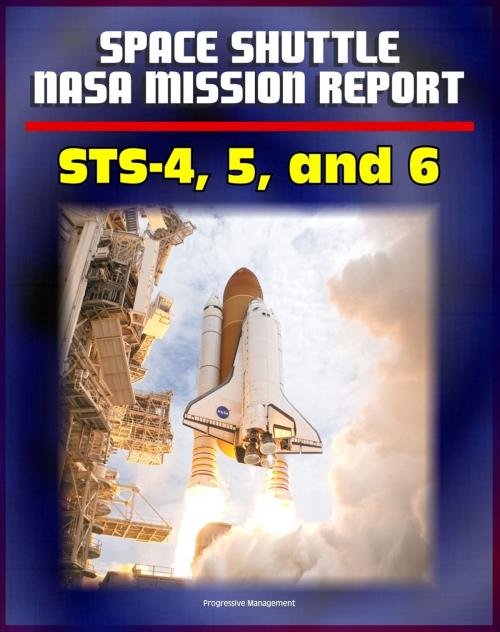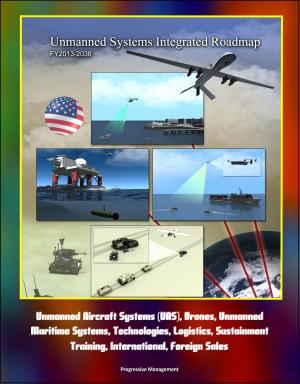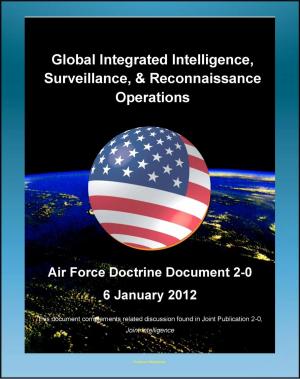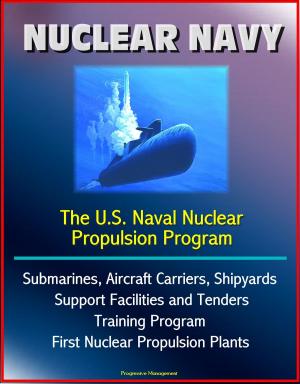Space Shuttle NASA Mission Reports: STS-4, STS-5, and STS-6 Missions in 1982 and 1983 - Complete Technical Details of Orbiter Performance and Problems
Nonfiction, Science & Nature, Science, Physics, Astronomy, History, Americas| Author: | Progressive Management | ISBN: | 9781465830647 |
| Publisher: | Progressive Management | Publication: | December 22, 2011 |
| Imprint: | Smashwords Edition | Language: | English |
| Author: | Progressive Management |
| ISBN: | 9781465830647 |
| Publisher: | Progressive Management |
| Publication: | December 22, 2011 |
| Imprint: | Smashwords Edition |
| Language: | English |
These official final orbiter mission reports issued by the NASA Johnson Space Center cover three missions in 1982 and 1983: STS-4, STS-5, and STS-6. In these thorough reports, with information and specifics not available on NASA website mission descriptions, each orbiter system is reviewed in detail along with technical information on performance and anomalies.
STS-4: The successful STS-4 mission was flown as planned with the launch on June 27, 1982, and the landing on July 4, 1982. The crew for the fourth orbital flight test was Captain T. K. Mattingly, Commander, and Henry W. Hartsfield, Jr., Pilot. Major activities during the fourth orbital flight test included remote manipulator system operations with a 900-1b payload (Induced Environment Contamination Monitor). This flight also included the first Department of Defense payload (DOD 82-1). All of the Orbiter services required by the Payload Integration Plan, annexes, etc. were supplied as planned with one exception. The wiring harness between the crew cabin area and the GAS (GetAway Special) experiment was not satisfactory, but the crew were successful in working around this problem and activating the GAS experiment.
STS-5: The STS-5 mission was launched on November 11, 1982 at 12:18:59.997 G.m.t., and landed November 16, 1982 at Edwards AFB, CA. The crew for this first commercial satellite deployment mission was Vance D. Brand, Commander; Colonel Robert F. Overmyer, Pilot; and William B. Lenoir, Ph.D., and Joseph P. Allen IV, Ph.D., Mission Specialists. All DTO/DSO test objectives of the flight were successfully completed except for the extravehicular activity which was cancelled because of extravehicular mobility unit problems.
STS-6: The STS-6 flight was launched on April 04, 1983, at 18:30:00.016 G.m.t. (12:30 p.m. c.s.t.) and landed April 09, 1983, at Edwards AFB, CA. The crew was Paul J. Weitz, Commander; Col. Karol J. Bobko, Pilot; and F. Story Musgrave, M.D., and Donald H. Peterson, Mission Specialists. Fifty-one of the 53 test objectives were accomplished. The two objectives that were not accomplished were DTO 0755 (autoland to 5000 ft) and DTO 0805 (crosswind landing performance). The ascent phase was normal in all aspects with all systems operating near predicted levels. The SRB (solid rocket booster) performance was satisfactory with the propellant burn rate about 0.2-percent lower than predicted. The action time was long by about 0.46 second on the right-hand motor and 0.96 second on the left-hand motor, resulting in SRB separation being delayed 0.75 second from predicted. All systems of the new lightweight ET (external tank) operated satisfactorily and the tank impacted only 5 nautical miles from the predicted point, well within the predicted footprint.
These official final orbiter mission reports issued by the NASA Johnson Space Center cover three missions in 1982 and 1983: STS-4, STS-5, and STS-6. In these thorough reports, with information and specifics not available on NASA website mission descriptions, each orbiter system is reviewed in detail along with technical information on performance and anomalies.
STS-4: The successful STS-4 mission was flown as planned with the launch on June 27, 1982, and the landing on July 4, 1982. The crew for the fourth orbital flight test was Captain T. K. Mattingly, Commander, and Henry W. Hartsfield, Jr., Pilot. Major activities during the fourth orbital flight test included remote manipulator system operations with a 900-1b payload (Induced Environment Contamination Monitor). This flight also included the first Department of Defense payload (DOD 82-1). All of the Orbiter services required by the Payload Integration Plan, annexes, etc. were supplied as planned with one exception. The wiring harness between the crew cabin area and the GAS (GetAway Special) experiment was not satisfactory, but the crew were successful in working around this problem and activating the GAS experiment.
STS-5: The STS-5 mission was launched on November 11, 1982 at 12:18:59.997 G.m.t., and landed November 16, 1982 at Edwards AFB, CA. The crew for this first commercial satellite deployment mission was Vance D. Brand, Commander; Colonel Robert F. Overmyer, Pilot; and William B. Lenoir, Ph.D., and Joseph P. Allen IV, Ph.D., Mission Specialists. All DTO/DSO test objectives of the flight were successfully completed except for the extravehicular activity which was cancelled because of extravehicular mobility unit problems.
STS-6: The STS-6 flight was launched on April 04, 1983, at 18:30:00.016 G.m.t. (12:30 p.m. c.s.t.) and landed April 09, 1983, at Edwards AFB, CA. The crew was Paul J. Weitz, Commander; Col. Karol J. Bobko, Pilot; and F. Story Musgrave, M.D., and Donald H. Peterson, Mission Specialists. Fifty-one of the 53 test objectives were accomplished. The two objectives that were not accomplished were DTO 0755 (autoland to 5000 ft) and DTO 0805 (crosswind landing performance). The ascent phase was normal in all aspects with all systems operating near predicted levels. The SRB (solid rocket booster) performance was satisfactory with the propellant burn rate about 0.2-percent lower than predicted. The action time was long by about 0.46 second on the right-hand motor and 0.96 second on the left-hand motor, resulting in SRB separation being delayed 0.75 second from predicted. All systems of the new lightweight ET (external tank) operated satisfactorily and the tank impacted only 5 nautical miles from the predicted point, well within the predicted footprint.















